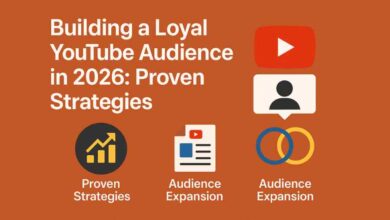Nubbin Tech: The Viral Brain-Chip From Black Mirror That Fooled the Internet

“Nubbin tech” exploded across social media this year: a coin-sized neural implant that claimed to let you relive memories, regulate emotions, and “optimize consciousness.” Tech influencers showed themselves unboxing mysterious black devices and sticking them to their temples, their pupils fading to a distant glaze. Promotional blurbs described a Gen-9 neural processor, dream-safe encryption, and real-time mood modulation. For a moment, the world believed it was real.
But it wasn’t. Nubbin tech is entirely fictional—a brilliant marketing campaign orchestrated to promote Black Mirror Season 7. Designed by the show’s creative team and wrapped in the branding of the fictional company TCKR Systems, Nubbin was part sci-fi fantasy, part social experiment, and part viral masterpiece.
So how did this imaginary piece of tech fool so many? What made it so believable, and what does it reveal about our obsession with brain–machine technologies?
What Is Nubbin Tech?
According to the campaign materials, Nubbin was a next-generation neural implant developed by TCKR Systems—a name familiar to Black Mirror fans. About the size of a coin, the device promised to unlock real-time access to memories, offer emotional enhancements, and blur the line between consciousness and computation.
It was marketed as something sleek, beautiful, and deeply futuristic: just press it to your temple and step into your past. But as it turns out, every part of it was scripted. There was no launch, no product, and no lab. Nubbin tech was born from fiction, engineered to look real, and designed to make us question the very nature of what we consider possible.
The Black Mirror Connection
TCKR Systems is not new to the Black Mirror universe. The fictional company first appeared in the critically acclaimed episode “San Junipero,” where it offered digital afterlives for dying patients. In Season 7, TCKR returns with Nubbin as its flagship consumer technology.
This time, instead of confining consciousness to a digital heaven, the Nubbin brought it into everyday life. It wasn’t a medical device or a therapy tool—it was a lifestyle product. And that’s what made it so compelling. Unlike the heavy machinery often seen in brain-computer interface (BCI) research, the Nubbin was small, personal, and designed for everyone.
A Masterclass in Viral Marketing
Before Netflix confirmed anything, tech influencers began receiving sleek black packages containing the Nubbin device and cryptic instructions. Unboxing videos flooded TikTok, Instagram, and YouTube. Some influencers claimed emotional breakthroughs; others faked fainting spells or visionary episodes. The campaign was never officially labeled fiction, allowing it to flourish in the fertile soil of online speculation.
No press releases were issued. No brands were named. The campaign relied entirely on intrigue. Even tech bloggers and media outlets were initially unsure if it was a real startup. The line between reality and fiction was intentionally blurred.
Why People Believed It
One reason people fell for Nubbin tech was because it sounded just real enough. It mirrored real-world developments from companies like Neuralink and Kernel, who are actively working on brain implants and neurofeedback systems.
The campaign used believable tech terminology: adaptive neural mesh, emotional modulation algorithms, edge-AI co-processors. Anyone casually familiar with neuroscience or wearable tech could be tricked into thinking this was the next step in a very real and accelerating field.
The Nubbin also tapped into something emotional. People want to remember. They want to reconnect with moments and feelings they’ve lost. The idea of revisiting your favorite memory—perfectly and vividly—is seductive. It’s not just futuristic; it’s romantic.
The Power of the Fictional Company: TCKR Systems
Black Mirror fans already knew TCKR as the digital afterlife corporation. By using a familiar fictional brand, the showrunners added depth and believability. The Nubbin didn’t appear out of nowhere—it was part of a long arc of technological “progress” within the show’s universe.
That context gave the product narrative weight. Viewers already believed TCKR could store consciousness. Nubbin was simply their latest upgrade.
Episodes Featuring Nubbin Tech
The Nubbin appears prominently in several Season 7 episodes:
“Eulogy” explores a grieving husband who replays his memories of his late wife, only to spiral into obsession and loss of reality.
“Hotel Reverie” shows tourists using Nubbins to modulate emotions during vacations—resulting in surreal and fractured identities.
“Callister: Rebooted” reintroduces the USS Callister world, where Nubbin devices allow users to transfer between realities, breaking the boundaries of selfhood.
Each episode plays with the idea of control—control over memories, identity, and emotions. The tech is both liberating and deeply dangerous, depending on who’s using it and why.
The Psychology Behind Nubbin’s Appeal
Nubbin’s biggest asset wasn’t the marketing—it was the psychological need it tapped into. Everyone wants a second chance to say goodbye, to relive joy, or to understand past pain. Nubbin offered that possibility, even if only fictionally.
This emotional hook made it more than a piece of sci-fi. It made it personal. The desire for memory retrieval is powerful, and the idea of externalizing that power into a chip was irresistible.
How Social Media Helped Fuel the Illusion
Hashtags like #NubbinTech and #NubbinJourney exploded. Influencers staged dramatic memory recalls, carefully edited flashback montages, and tearful testimonial-style clips. TikTok alone amassed hundreds of millions of views under the Nubbin hashtag.
Commenters debated its legality, asked how to buy it, and speculated on side effects. Some assumed it was an exclusive beta product being tested in private markets. Others joked about the government using it for mind control.
The campaign thrived on ambiguity. No one knew if it was real, which made everyone look harder.
Reality Check: Is This Technology Possible?
In real life, memory reconstruction is still in its infancy. Neuroscientists can decode certain brain patterns, but full-scale memory replay—especially with emotional fidelity—is far from possible.
Companies like Neuralink have developed working implants that can control cursors or restore movement, but even those are limited and invasive. The idea of a sleek, adhesive device that reads your memories is science fiction for now.
However, the dream isn’t completely outlandish. The human brain is electrical and chemical—meaning, in theory, that every thought and memory could be translated. The question isn’t if it can be done—it’s when, how, and whether we should.
Ethical Questions Raised
The Nubbin campaign raised serious ethical issues, even though it was fictional. Is it acceptable to create fake medical products for entertainment? Could vulnerable people—such as those with memory-related diseases—have been misled?
While most users recognized it as a hoax, others didn’t. The campaign blurred boundaries not just between tech and entertainment, but also between hope and manipulation.
It’s a reminder that marketing has real-world consequences, even when the product is imaginary.
Lessons for Real Tech Innovators
Despite being fictional, Nubbin tech offers valuable lessons for real companies:
- Design matters: The Nubbin looked beautiful and believable. Packaging influences trust.
- Narrative is powerful: By building on a known fictional universe, the campaign had immediate depth and context.
- People crave control over their minds: This is a major untapped market in consumer tech. Emotional regulation, memory enhancement, and cognitive tracking are likely future industries.
Tech startups can learn from Nubbin by focusing on trust, storytelling, and user desire—not just specs.
Conclusion
Nubbin tech may not be real, but it sparked very real questions. It showed us how easily fiction can pass for reality when crafted with intelligence and emotion. It highlighted how ready people are for the next evolution of tech—something personal, intimate, and powerful.
As real-world brain–computer interfaces evolve, Nubbin stands as both a creative milestone and a cautionary tale. It reminds us that the line between believable and real is thinner than ever—and that when it comes to our minds, we should be careful what we wish for.



